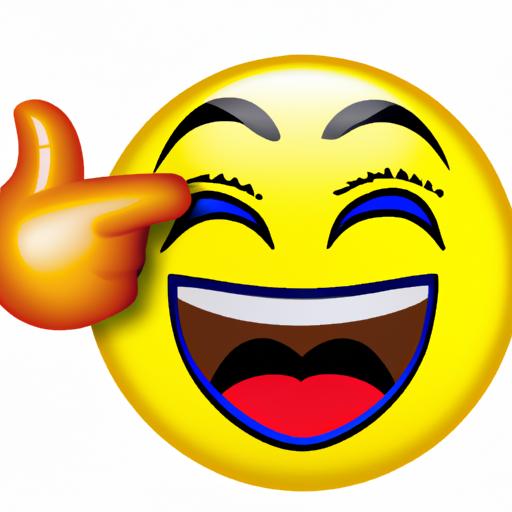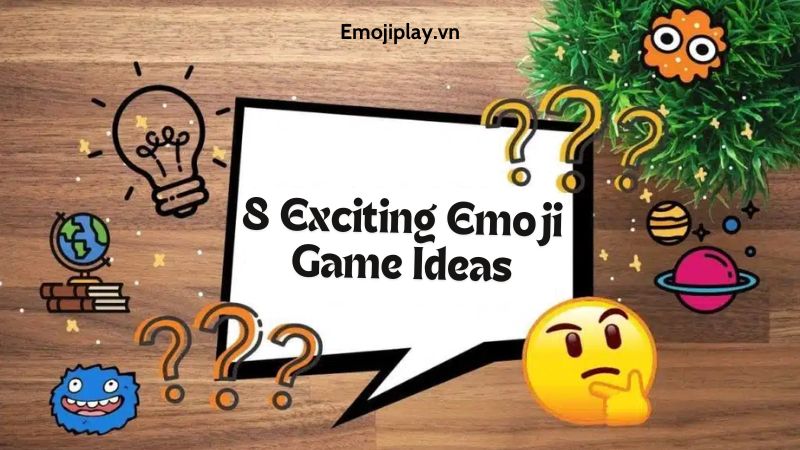Introduction to Emoji Laughing and Pointing

Laughing and pointing — a dynamic duo that has transcended traditional communication. In this digital era, emojis have become the universal language of expression, enriching our conversations with a touch of visual delight. Among these captivating symbols, the emoji laughing and pointing holds a special place. Today, let’s embark on a journey to unravel the true essence and significance of this lively emoj
Emojis have revolutionized the way we communicate, injecting emotions into our text-based conversations. As words alone sometimes fall short in conveying our feelings, emojis bridge the gap by adding depth and nuance. These small pictographs have grown in popularity, becoming an integral part of our online interactions.
Now, let’s focus on the star of the show — the laughing and pointing emoji. This particular emoji, represented by a face with tears of joy and a finger pointing forward, captures a sense of lighthearted amusement combined with an element of direction. Its presence in our digital conversations has become ubiquitous, reflecting an emotion that transcends cultural and linguistic barriers.
The laughing and pointing emoji holds a significant place in modern communication, symbolizing moments of uncontrollable laughter and the desire to share something amusing with others. It embodies the essence of humor and serves as a virtual invitation, beckoning others to join in the mirthful experience.
In the upcoming sections, we will explore the meaning behind this iconic emoji, its evolution throughout history, its cultural relevance, effective usage tips, and even ponder its future. So, buckle up for an exciting adventure through the vibrant world of the emoji laughing and pointing!
The Meaning Behind Emoji Laughing and Pointing

Interpreting the Emoji’s Intended Emotion and Action
The laughing and pointing emoji, with its tears of joy and an outstretched finger, encapsulates a range of emotions and actions. At its core, it represents sheer amusement and uncontrollable laughter. When you encounter something so funny that it leaves you in stitches, this emoji becomes your virtual companion, allowing you to express your delight in a visual way.
Beyond laughter, the pointing finger in the emoji introduces an element of direction. It signifies the desire to share the source of amusement with others, directing their attention towards something humorous. It acts as a friendly nudge, inviting others to join in the laughter and revel in the whimsical moment.
Analyzing Usage in Various Contexts
The laughing and pointing emoji has found its way into various digital platforms, enriching our online conversations and interactions.
In social media, it thrives as a symbol of camaraderie, allowing users to express their shared enjoyment of funny posts or memes. It creates a sense of community, as users can easily convey their amusement and connect with others who share their sense of humor.
On messaging apps, this emoji often serves as a catalyst for lively conversations. It helps break the ice, injecting humor into chats and lightening the mood. Whether you’re teasing a friend or reacting to a hilarious anecdote, the laughing and pointing emoji adds a touch of playfulness and camaraderie to your messages.
Moreover, in digital spaces where tone can be easily misconstrued, this emoji acts as a non-verbal cue, ensuring that the recipient understands the light-hearted nature of the message. It helps prevent misunderstandings and fosters a positive atmosphere in online interactions.
With its versatility and ability to convey both laughter and direction, the laughing and pointing emoji has become a beloved staple of digital communication. Its presence adds a dash of joy and shared amusement, making conversations more engaging, inclusive, and, most importantly, fun!
Evolution and History of Emoji Laughing and Pointing
Tracing the Origins of the Laughing and Pointing Emoji
The laughing and pointing emoji didn’t appear out of thin air; it has an intriguing history that dates back to the early days of emojis. The precursor to this lively symbol can be traced back to the Japanese mobile phone culture of the late 1990s.
In 1999, the renowned Japanese artist Shigetaka Kurita created a set of 176 simple, pixelated icons known as emojis. These emojis were designed to add emotional context to text messages, allowing users to express themselves more vividly. However, the specific laughing and pointing emoji as we know it today was not part of Kurita’s original collection.
Over time, as emojis gained popularity and spread beyond Japan, various platforms and operating systems began incorporating their own unique set of emojis. It was during this evolution that the laughing and pointing emoji emerged, capturing the essence of amusement and direction in a single character.
Notable Variations and Changes Over Time
Like any cultural phenomenon, emojis continue to evolve and adapt to the changing times. The laughing and pointing emoji has not been immune to these transformations. With each new release of Unicode, the universal character encoding standard, new emojis are introduced, and existing ones may undergo subtle modifications.
One notable change occurred in 2010 when the Unicode Consortium, the organization responsible for standardizing emojis, refined the design of the laughing and pointing emojThe update brought a more defined and recognizable appearance to the symbol, enhancing its expressiveness.
Furthermore, different platforms and devices often interpret emojis differently, resulting in slight variations in their appearance. From Apple to Google, Twitter to Facebook, each platform adds its own touch, giving the laughing and pointing emoji a unique flair.
The evolution and history of the laughing and pointing emoji showcase its enduring appeal and its ability to adapt to the ever-changing landscape of digital communication. As we move forward, let’s explore the impact and cultural relevance of this captivating emoji in the following sections.
Impact and Cultural Relevance of Emoji Laughing and Pointing
In this digital age, the emoji laughing and pointing has left an indelible mark on the realm of communication, making a significant impact on our online interactions and shaping internet culture. Let’s delve deeper into the role of this emoji in digital communication and its influence on the creation of memes.
Role of the Emoji in Digital Communication and Expression
The laughing and pointing emoji serves as a powerful tool to convey emotions and enhance the tone of our messages. When words alone fail to capture the essence of a funny situation, this expressive emoji steps in, instantly evoking joy and amusement. Its presence can transform a mundane conversation into a lighthearted exchange, bridging gaps and fostering connection.
This emoji’s cultural relevance lies in its ability to transcend language barriers. It speaks a universal language of laughter, connecting people from different corners of the world through shared emotions. Regardless of one’s native tongue, the laughter elicited by this emoji is universally understood, generating a sense of camaraderie and unity.
Influence on Internet Culture and Memes
The laughing and pointing emoji has become an integral part of internet culture, fueling the creation and spread of memes. Memes, those humorous images or videos that rapidly circulate online, often rely on this emoji to amplify their comedic impact. By pairing relatable or absurd situations with the laughing and pointing emoji, creators generate a shared experience that resonates with viewers, resulting in viral sensations.
Moreover, this emoji has become synonymous with “LOL” (laugh out loud) culture. It has become a visual representation of humor, transforming the way we express amusement in written conversations. From social media platforms to messaging apps, this emoji has cemented its place as a staple in our digital lexicon, leaving an unmistakable mark on internet culture.
As we navigate the vast digital landscape, the laughing and pointing emoji continues to shape our online interactions, bringing joy and laughter to our conversations, transcending boundaries, and leaving an imprint on the ever-evolving world of memes. Its impact is undeniable, and its cultural relevance continues to grow with each passing day. Stay tuned as we explore how to effectively incorporate this emoji into our conversations in the upcoming sections.
The Future of Emoji Laughing and Pointing
As we delve into the captivating world of the emoji laughing and pointing, it is only natural to wonder about its future. Will this expressive symbol continue to dominate our digital conversations, or will it evolve into something even more enchanting? Let’s take a moment to speculate on the exciting possibilities that lie ahead.
1. Adaptations and Innovations
In a world where technology is constantly evolving, it is not far-fetched to imagine the laughing and pointing emoji undergoing adaptations and innovations. As our modes of communication progress, emojis may become more animated, interactive, or customizable. Imagine a future where the emoji laughs heartily or even points towards personalized content, adding a touch of personalization to our conversations.
2. Integration with Augmented Reality (AR)
With the rise of augmented reality (AR) technologies, emojis may find their way into our physical world. Picture a scenario where you can use your smartphone to project the emoji laughing and pointing onto your surroundings, creating a playful and immersive experience. This integration of AR and emojis could enhance our communication, allowing us to express emotions in a whole new dimension.
3. Cultural Adaptations
As emojis continue to gain global popularity, it’s possible that the emoji laughing and pointing may undergo cultural adaptations. Different regions and communities may interpret and use the emoji in unique ways, infusing it with local humor and context. This evolution could lead to a rich tapestry of interpretations, expanding the emoji’s versatility and cultural relevance.
4. Enhanced Contextual Understanding
With advancements in natural language processing and artificial intelligence, emojis may become even more adept at understanding context. They could dynamically adjust their meaning based on the surrounding conversation, ensuring that the emoji laughing and pointing accurately reflects the intended emotion. This would prevent misinterpretations and enhance the overall effectiveness of emojis in communication.
As we eagerly anticipate the future, one thing is certain: the emoji laughing and pointing will continue to bring joy, laughter, and direction to our digital conversations. Its enduring popularity speaks volumes about its ability to connect people across borders and language barriers. So, keep an eye out for the innovations and adaptations that await us in the remarkable journey of the emoji laughing and pointing.
Emoji Play is thrilled to be part of this exciting digital landscape, exploring the endless possibilities of emojis and their impact on communication. Join us as we continue to unravel the fascinating world of emojis, one expression at a time.










